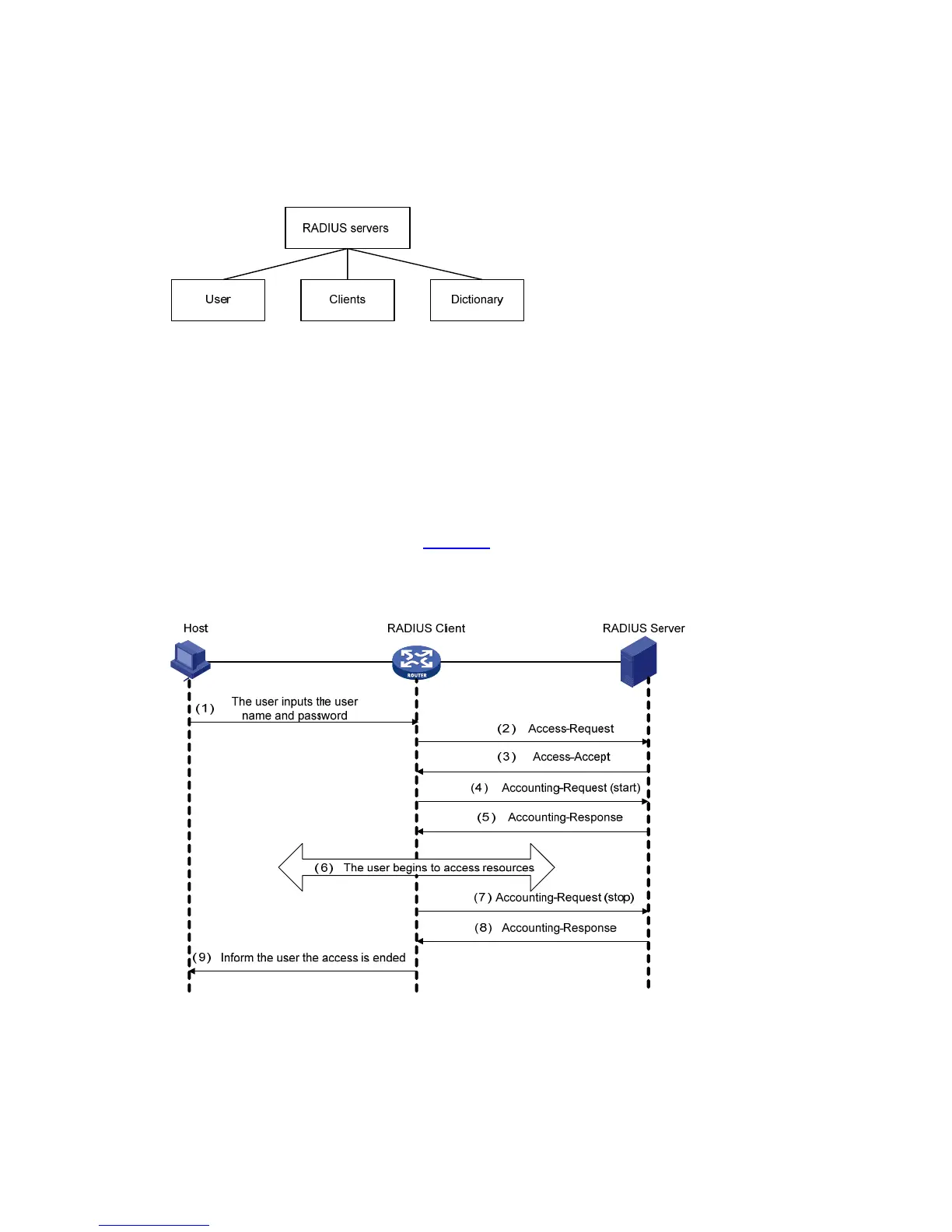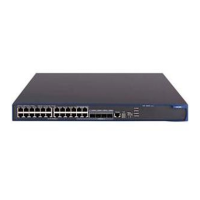1-3
z Clients: This database stores information about RADIUS clients (such as shared key).
z Dictionary: The information stored in this database is used to interpret the attributes and attribute
values in the RADIUS protocol.
Figure 1-1 Databases in a RADIUS server
In addition, a RADIUS server can act as a client of some other AAA server to provide authentication or
accounting proxy service.
Basic message exchange procedure in RADIUS
The messages exchanged between a RADIUS client (a switch, for example) and a RADIUS server are
verified through a shared key. This enhances the security. The RADIUS protocol combines the
authentication and authorization processes together by sending authorization information along with
the authentication response message.
Figure 1-2 depicts the message exchange procedure between
user, switch and RADIUS server.
Figure 1-2 Basic message exchange procedure of RADIUS
The basic message exchange procedure of RADIUS is as follows:
1) The user enters the username and password.
2) The RADIUS client receives the username and password, and then sends an authentication
request (Access-Request) to the RADIUS server.

